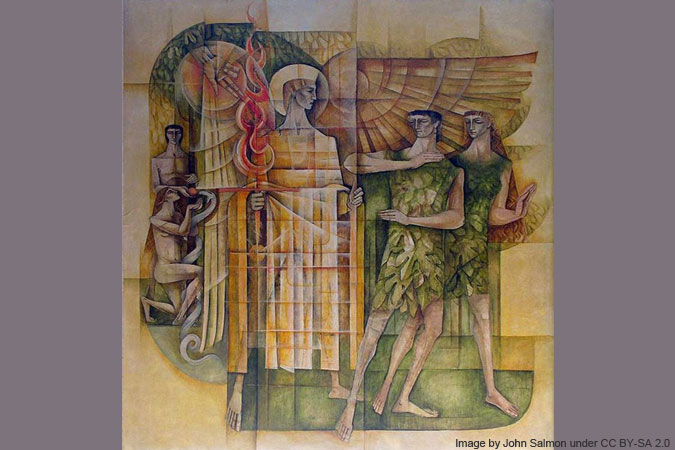
Whenever I serve in my parish as a catechist, I notice something distressing: children generally have little knowledge of Bible stories. Many of them cannot connect the dots from Jesus’ birth in a stable to his Death and Resurrection. Even fewer can connect Adam and Eve to Jesus; only a few have heard of such key ancestors in faith as Abraham, Moses, and David; and almost none of them realize how they personally are connected to the great story of Salvation.
Young people cannot explain why the Bible is relevant to daily life or to Catholic doctrine and practice. They may be able to tell us about the Eucharist, but what can they explain about God’s covenant and promises? What can they tell us about how Jesus fulfills that covenant for them personally every time they receive the Eucharist? Most children simply don’t know The Story.
There are many good resources for catechists to use for retelling individual Scripture stories. But better than a piecemeal approach, every catechist should be familiar with The Story—the overall timeline of salvation history with all its significant people and moments—and be able to show their students how it all fits together.
So how do we form catechists to share The Story? First, they should participate in regular Scripture study. Joe Paprocki’s The Bible Blueprint would be a great place to start. Six Weeks with the Bible: On the Way to the Promised Land focuses on covenant. An overview Bible study concentrating on narrative can be helpful as long as catechists realize the Bible also contains other, non-narrative books. Movie nights (with appropriate group-viewing licensing) featuring biblical movies, such as The Ten Commandments or The Greatest Story Ever Told, could be part of catechist (and all adult) formation. Discussion afterwards could focus on how characters in the movie help us understand God’s covenant and our own faith.
Catechists should be able to help students create a timeline for The Story—starting with Creation and including Adam and Eve, Abraham, Moses, David, the Prophets, Mary, Jesus, the Apostles, and the Church. The Timeline of God’s Friends activity is a great one for this. Involving students in creating the timeline is more effective than a purchased pictorial timeline on the wall of each classroom. Catechists should be able to help students tell how they became part of The Story at Baptism (when the power of Christ removed for them the original sin of Adam and Eve).
An old hymn popular with fellow Christians begins, “I love to tell the story of Jesus and his glory…” That should be something Catholics love to do as well, because those who tell The Story help make new disciples who also love to tell.




As usual I’ll be covering about 75 Bible stories this year in Catechism class.
Great points, Joyce – the youth need to know the Salvation Story because just as God called Abraham, Moses, Mary, the Apostles, etc. for a role in His Salvation plan, He calls each one of us to continue His work.
In the Salvation History curriculum we use in our Parish for 6th grade CCD students, we have the youth locate and read short passages from Scripture, and we discuss the messages God is revealing to us – we help the youth discover “my story is in this story!” We help the youth feel more comfortable navigating through the Bible we encourage them to read this story again and again.
Another great resource for Catechists – the book “Walking With God” by Tim Gray and Jeff Cavins.